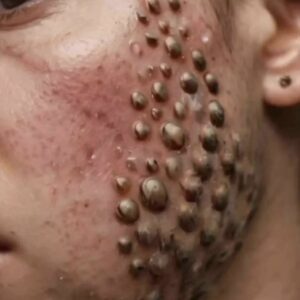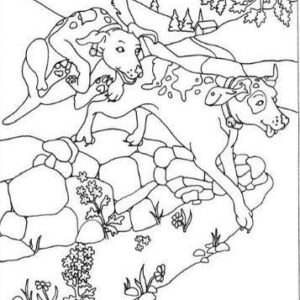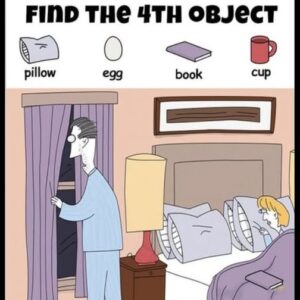The Mystery of Hidden Faces: Exploring the Depths of Optical Illusion Art
Have you ever looked at an image and realized that the longer you stare, the more faces and shapes begin to appear? That’s the fascinating power of optical illusion art. The photo above is a perfect example, where multiple human profiles are woven together seamlessly to form one intricate masterpiece. At first glance, you might see a single face, but look closer, and you’ll uncover an entire collection of expressions hidden within the lines. Let’s dive into the magic of this artwork and explore why our brains love these clever illusions.
The First Impression: A Face Within Faces
At a quick glance, the drawing seems simple—just a series of profiles lined up in harmony. But as your eyes adjust, you begin to notice how one face blends into another, forming new shapes and perspectives. The thicker outlines create larger silhouettes, while the finer lines give rise to smaller, softer faces. It’s a puzzle for the mind, asking you to look deeper and recognize what’s been hiding in plain sight.
The Art of Illusion in Design
Optical illusions like this are more than clever sketches—they’re deliberate artistic choices. By using negative space, overlapping contours, and varying line thickness, the artist creates an interplay between what’s obvious and what’s hidden. Each face is both independent and part of the whole, echoing the idea that perception depends on perspective.
This isn’t just a trick for the eyes—it’s storytelling without words. Every hidden face feels like a secret, waiting to be found by those who take the time to notice.
Why Our Brains Love Hidden Faces
So, why do we find ourselves so captivated by drawings like this? The answer lies in how our brains are wired. Humans are naturally skilled at recognizing faces—a phenomenon called pareidolia. Even in random patterns, clouds, or shadows, our minds instinctively try to see human features.
Pattern Recognition: Our brains scan for familiar shapes, rewarding us when we identify a face.
Memory Connection: Each discovery sparks curiosity and satisfaction, similar to solving a riddle.
Focus and Attention: Hidden faces demand patience, pulling us into the present moment.
In short, our love for optical illusions isn’t just about art—it’s biology meeting creativity.
See results here:
The Symbolism Behind Multiple Faces
This artwork isn’t just visually clever—it’s deeply symbolic. The overlapping faces can represent the layers of human identity, emotions, and relationships. Just as no two faces in the picture are identical, no two people experience the world the same way.
Some might see the faces as a family tree, suggesting generations connected by shared traits. Others might view them as fragments of the self, showing how we carry multiple versions of ourselves—child, adult, dreamer, thinker—within us.
It’s art that makes you pause and reflect: how many versions of yourself do you recognize in this puzzle of faces?
Tips for Spotting Every Hidden Face
Think you’ve found them all? Here are some tricks to help uncover even the most hidden ones:
Shift Your Perspective: Step back or tilt the image slightly. Sometimes distance reveals what’s hidden.
Focus on Outlines: Look at the bold lines first, then notice how the inner curves create smaller profiles.
Count Methodically: Start from one side and move across carefully—you’ll avoid missing subtle faces.
Look for Symmetry: Many hidden faces are created by balancing shapes on either side.
Like piecing together a puzzle, the thrill is in the hunt.
Why Optical Illusion Art Appeals to All Ages
From kids to adults, hidden face puzzles bring out the same sense of wonder. Children love the excitement of finding “the next face,” while adults appreciate the artistry and deeper meaning. Beyond entertainment, these illusions act as mindful exercises—forcing us to slow down, breathe, and really observe.
It’s rare to find an art form that blends fun, challenge, and reflection in one, but optical illusions do just that. They’re not just drawings—they’re experiences.
Conclusion: Seeing Beyond the Surface
This hidden face artwork is more than just lines on paper—it’s a reminder of how perception shapes reality. At first, you see one face. Then, with patience and curiosity, you find many more, each connected yet unique. The illusion mirrors life itself: if we only glance at the surface, we miss the richness hidden beneath.
So next time you encounter a puzzle like this, don’t rush. Take your time, trace the outlines, and let your imagination guide you. Because sometimes, the most extraordinary discoveries aren’t in what we first notice—they’re in the hidden details waiting quietly to be seen.





